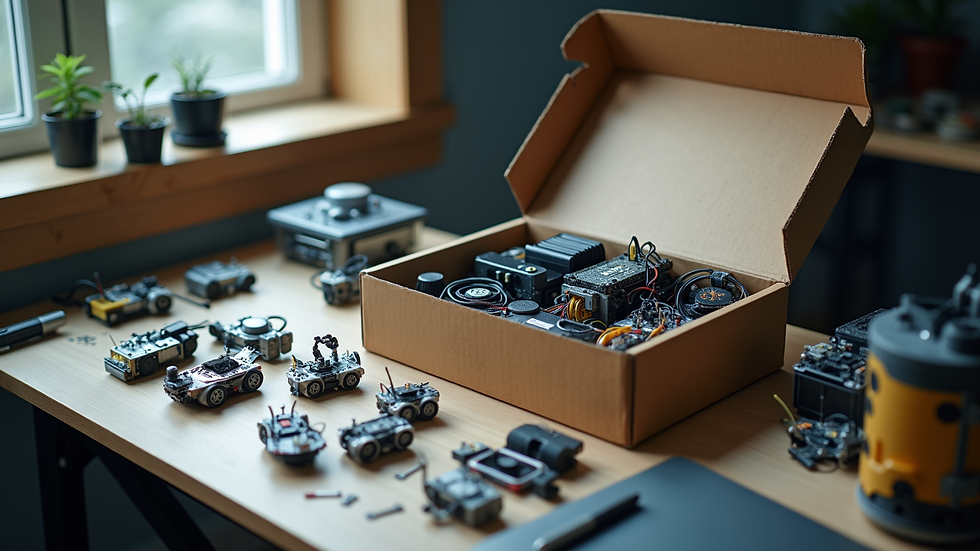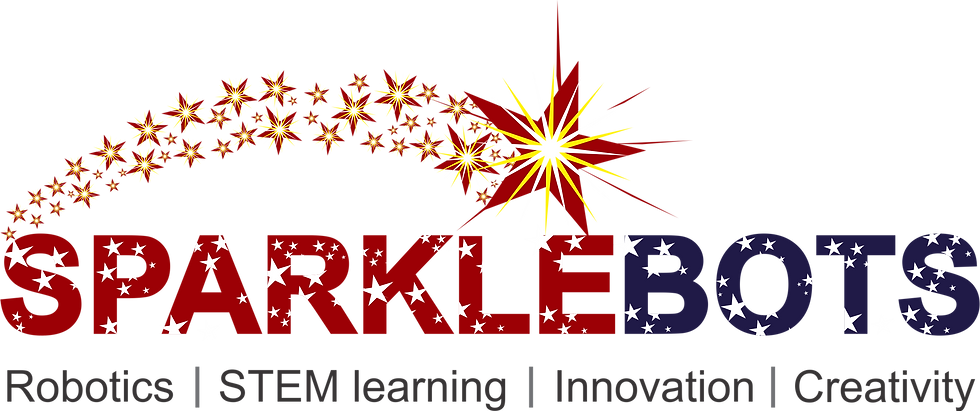Engage Young Minds with Robotics Learning
- Vinay Kunwar
- 24 hours ago
- 4 min read
Robotics is no longer just a futuristic concept; it is a vibrant, hands-on way to learn and create today. When children dive into robotics, they unlock a world of curiosity, problem-solving, and creativity. I have seen how engaging with robotics can transform young minds, making learning exciting and deeply rewarding. Let’s explore how learning robotics kits for children can spark a lifelong passion for technology and innovation.
Why Learning Robotics Kits for Children Matter
Robotics kits are more than just toys. They are powerful educational tools that blend science, technology, engineering, and mathematics (STEM) into one interactive experience. When children build and program robots, they develop critical thinking and practical skills that textbooks alone cannot provide.
For example, assembling a robot requires understanding mechanical parts and how they fit together. Programming it to move or respond to commands introduces coding concepts in a fun, approachable way. This hands-on learning helps children see the real-world applications of what they study in school.
Moreover, robotics encourages teamwork and communication. Many kits are designed for group projects, where children share ideas and solve challenges together. This social aspect builds confidence and collaboration skills, essential for future careers.

How Learning Robotics Kits for Children Boost Creativity and Problem-Solving
One of the most exciting things about robotics is the endless possibilities it offers. Children are not just following instructions; they are inventing and experimenting. This freedom fuels creativity and innovation.
When a robot doesn’t work as expected, it becomes a puzzle to solve. Children learn to troubleshoot, test different solutions, and refine their designs. This trial-and-error process teaches resilience and adaptability—qualities that are invaluable in any field.
For instance, a child might design a robot to navigate a maze. If the robot gets stuck, they must think critically about sensors, programming, or mechanical adjustments. Each attempt brings new insights and a sense of accomplishment.
In addition, robotics projects often integrate art and design. Kids can customize their robots’ appearance or create unique movements, blending technical skills with artistic expression. This holistic approach nurtures well-rounded thinkers.

What is the Best Robotics Kit for Kids?
Choosing the right robotics kit can make all the difference in a child’s learning journey. The best kits are those that balance educational value with ease of use and fun. They should be age-appropriate, with clear instructions and plenty of room for creativity.
One excellent option is the robotics kit for kids offered by Sparklebots Robotics. This kit is designed specifically to engage young learners with hands-on building and coding activities. It includes modular parts that snap together easily, making it accessible for beginners while still challenging for advanced users.
The Sparklebots kit also comes with comprehensive learning materials and online support, helping children and educators get the most out of their robotics experience. Whether it’s a simple robot or a complex project, this kit encourages exploration and discovery.
When selecting a kit, consider these factors:
Age suitability: Ensure the kit matches the child’s developmental stage.
Expandability: Look for kits that allow adding new components or programming features.
Support and resources: Good kits provide tutorials, lesson plans, and community forums.
Durability: Quality materials ensure the kit lasts through many projects.

Practical Tips to Get Started with Robotics Learning
Starting with robotics can feel overwhelming, but it doesn’t have to be. Here are some simple steps to make the journey smooth and enjoyable:
Set clear goals: Decide what you want to achieve. Is it learning basic coding, building a specific robot, or preparing for competitions?
Choose the right kit: Pick a kit that fits your goals and skill level.
Create a dedicated workspace: A clean, organized area helps keep parts and tools in order.
Follow tutorials step-by-step: Don’t rush. Understanding each step builds confidence.
Encourage experimentation: Let children try new ideas, even if they fail at first.
Join a community: Online forums or local clubs provide support and inspiration.
Integrate with school projects: Robotics can complement science and math lessons.
By breaking down the learning process into manageable steps, children stay motivated and enjoy steady progress. Remember, every small success builds enthusiasm for the next challenge.
Inspiring Future Innovators Through Robotics
Robotics education is more than just learning technology; it’s about preparing for the future. As automation and AI become integral to many industries, skills in robotics open doors to exciting careers.
When children engage with robotics early, they develop a mindset geared toward innovation. They learn to approach problems creatively and work collaboratively. These experiences shape confident, capable individuals ready to tackle tomorrow’s challenges.
Institutions that invest in advanced robotics labs provide students with invaluable opportunities. These labs become hubs of creativity and learning, where students can experiment freely and gain hands-on experience.
At Sparklebots Robotics, the mission is to empower students across India and beyond with these practical skills. By expanding access to quality robotics education, we help nurture the next generation of engineers, programmers, and inventors.
So, why wait? Let’s inspire young minds today with the magic of robotics. The journey is exciting, the skills are lifelong, and the possibilities are endless.





Comments